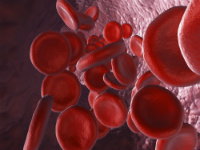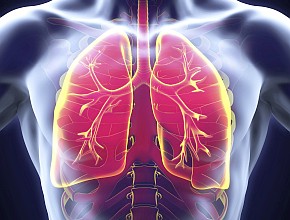Below are the articles selected as suggested reading for this week by McMaster editors.
CPAP: preventing cardiovascular events in obstructive sleep apnea
In observational studies, obstructive sleep apnea (OAS) is associated with an increased risk of cardiovascular events, and its treatment may be associated with improved prognosis.
The current study, done among people with moderate to severe OSA, provides the largest body of experimental evidence confirming the beneficial effects of continuous positive airway pressure (CPAP) in terms of decreased sleepiness, improved physical and emotional well-being, and overall improvement in the quality of life. At the same time, there was no indication that such treatment prevents death, cardiovascular death, myocardial infarction, or cerebrovascular disease.
These findings may have implications for the management of asymptomatic patients without the most severe characteristics like severe daytime sleepiness (Epworth Sleepiness Scale score >15, with the score ranging from 0 to 24), severe hypoxemia (oxygen saturation <80% for >10% of recording time), high risk of an accident from falling asleep, or the Cheyne-Stokes pattern of respiration.
Safety of smoking cessation agents in patients without psychiatric disorders
Smoking cessation efforts are to a degree influenced by concerns about the safety of medications used for that purpose, specifically neuropsychiatric effects of bupropion and varenicline. This study provides significant reassurance regarding the safety of those drugs. The medications included varenicline (1 mg twice a day), bupropion (150 mg twice a day), nicotine patches (21 mg a day), or placebo for 12 weeks, with a total of 24 weeks of observation.
Among close to 4,000 smokers without a history of psychiatric disorders, the probability of not smoking between weeks 9 and 12 of the study was 38% among patients on varenicline, ~26% among patients on nicotine replacement therapy or bupropion, and 14% among patients on placebo. The probability of not smoking until week 24 was, respectively, 26%, ~19%, and 11%. The frequency of neuropsychiatric events was low (ranging from 1.25% in the varenicline group to 2.52% on placebo).
Safety of smoking cessation agents in patients with psychiatric disorders
Smoking cessation efforts among smokers with a history of psychiatric disorders are to a degree influenced by concerns about the safety of medications used in this setting, specifically neuropsychiatric effects of bupropion and varenicline. This study provides new information specific for this population on the efficacy and neuropsychiatric adverse effects of those drugs, which may inform decisions of patients and their clinicians. The studied medications included varenicline (1 mg twice a day), bupropion (150 mg twice a day), nicotine patches (21 mg a day), or placebo for 12 weeks, with a total of 24 weeks of observation.
Among over 4,000 smokers with a history of psychiatric disorders (~70% with unipolar or bipolar mood disorder, 20% with anxiety, 10% with psychosis, 1% with personality disorders), the probability of not smoking between weeks 9 and 12 of the study was 29% among patients on varenicline, ~20% among patients on nicotine replacement therapy (NRT) or bupropion, and 11% among patients on placebo. The probability of not smoking until week 24 was, respectively, 18%, ~13.5%, and 8%. The frequency of neuropsychiatric symptoms in those consecutive cohorts was 6.4% on varenicline, 6.6% on bupropion, 5.2% on NRT, and 4.8% on placebo (all comparisons nonsignificant statistically). For specific events, the number of patients in whom given symptoms were observed in these groups (each slightly over 1,000 smokers) were: for depression, 6, 4, 7, 6; for agitation, 25, 29, 21, 22; for psychosis, 4, 2 ,3, 1; for suicidal ideation, 5, 2, 3, 2.
The authors have concluded that varenicline and bupropion can be used by psychiatrically stable smokers (stable for at least 6 months with unchanged treatment for at least 3 months).
 English
English
 Español
Español
 українська
українська





